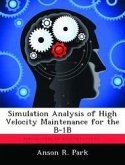Faced with eroding budgets, Air Mobility Command (AMC) is confronted with implementing simultaneous changes to its isochronal (ISO) inspection process for C-5 aircraft. C-5 inspection criteria will use a Maintenance Steering Group-3 (MSG-3) approach beginning in October, 2009. MSG-3 has been used successfully in civilian aviation since 1980 and AMC hopes to produce similar results. AMC is also consolidating the four docks presently in use to three high-velocity regionalized isochronal (HVRISO) docks. Centralized scheduling by AMC should utilize a dock selection method that minimizes both processing time and queue time when arriving aircraft cannot be immediately inducted into the servicing inspection dock. This study uses discrete-event simulation techniques to test the factors of dock consolidation, MSG-3 inspection times, and proposed dock selection methods at various levels. Using a designed experiment, the simulation examines the effects of each factor on aircraft availability. Regression analysis is applied to the simulation results to assess which factors have the greatest impact on processing and queue time.
Hinweis: Dieser Artikel kann nur an eine deutsche Lieferadresse ausgeliefert werden.
Hinweis: Dieser Artikel kann nur an eine deutsche Lieferadresse ausgeliefert werden.








